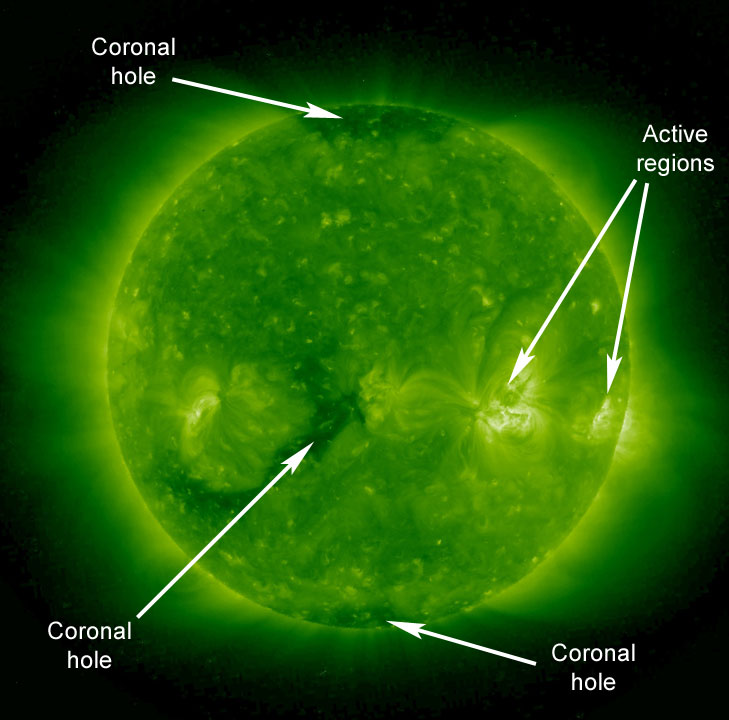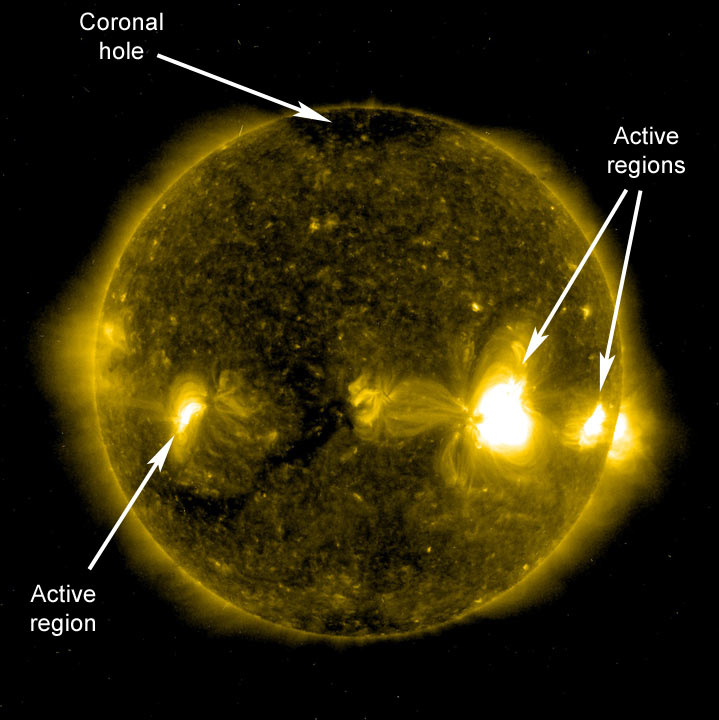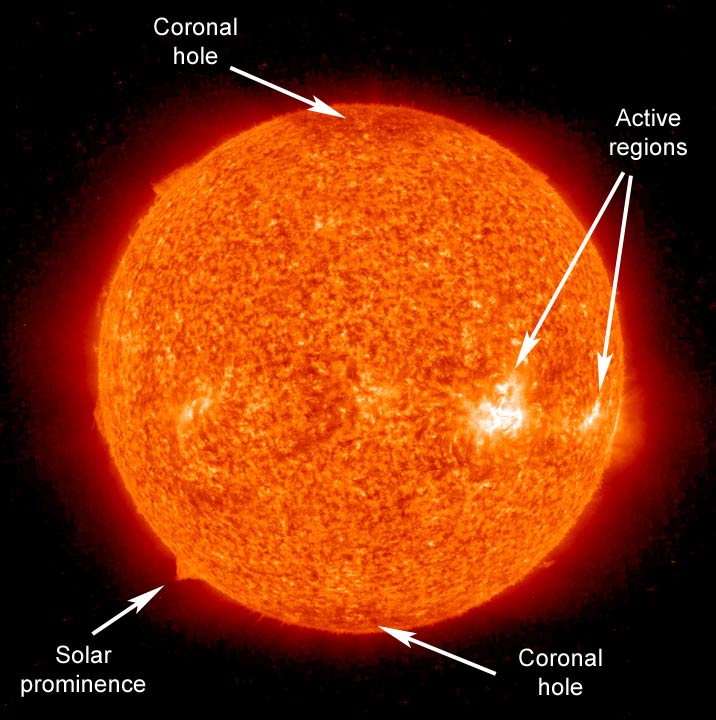Welcome to the STEREO Learning Center
EUV Images
The images below were taken by STEREO Ahead's SECCHI/EUVI telescope on June 10, 2007. Click on the
images to see larger versions. Because very little UV light penetrates the Earth's atmosphere, we have
to go into space to take images like these.
It is not possible for the human eye to see ultraviolet light directly.
Thus, the colors of these images are just ways to represent them so we can
see them. To keep the images straight, we assign certain colors to EUVI images
taken in particular extreme ultraviolet (EUV) wavelengths, so usually
the 195 Å images are in green, the 304 Å images are in orange, etc.
What is there to look for in these images? The most obvious features are
the bright active regions. These are areas where the Sun's strong
magnetic fields hold hot plasma (ionized gas) low in the Sun's
atmosphere. In visible light images of the sun there are dark sunspots in
these locations.
Also visible in these EUV images are coronal holes. These dark areas are in a
sense the opposite of active regions. Here the sun's magnetic field
opens out into the solar system, allowing plasma to escape.
If you look carefully at these images you can also see another type of feature -
long thin prominences. These features are bright along the edges of the
Sun in 304 A, but dark in the other EUVI wavebands. These long thin,
clouds of relatively cool gas (most, but not all of it at about 10,000
K) hang in the sun's corona and sometimes erupt, often as parts of
corona mass ejections (CMEs).
All these features, active regions, coronal holes, and prominences, may
last weeks or even months, so you can watch them move across the face
of the Sun as it rotates.

The Sun at 171 Å. Light at this wavelength is chiefly emitted by Fe IX and X (iron ionized 8 or 9 times)
at 1.0 million degrees K |

The Sun at 195 Å. Light at this wavelength is chiefly emitted by Fe XII (iron ionized 11 times)
at 1.4 million degrees K. |

The Sun at 284 Å. Light at this wavelength is emitted by Fe XV (iron ionized fourteen times)
at 2.2 million degrees K. |

The Sun at 304 Å. Light at this wavelength is emitted by He II (helium ionized once)
at 60,000 - 80,000 degrees K. |
The ions listed for each image are the main ones emitting light near that wavelength. A particular ion
only exists in a particular range of temperatures. It takes, for instance, more energy (higher
temperatures) to remove 14 electrons from an iron atom than it does to remove 11 electrons. Thus
material shown in the 284 Å image is produced at higher temperatures
than the material shown in the 195 Å image.
You might see EUVI image in other colors as well.
Many of these are composit images in which images
from a number of wavelengths have been
blended together
or in which images from the two STEREO spacecraft have been combined for a
"3D" effect.